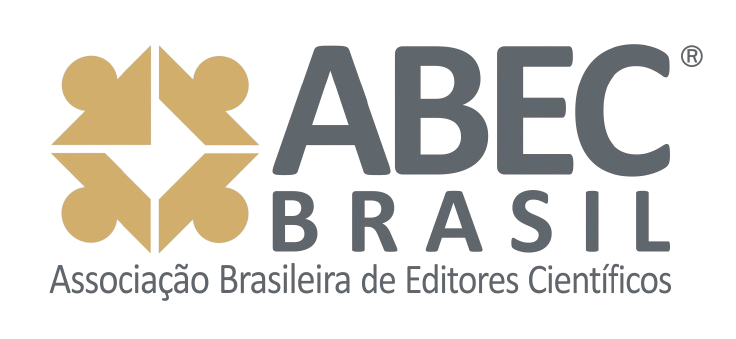O Uso da Inteligência Competitiva no Setor de Empresas de Pequeno Porte: o caso UOTZ
DOI:
https://doi.org/10.24883/IberoamericanIC.v9i2.298Keywords:
inteligência competitiva, marketing, sistema de informações de marketingAbstract
O presente trabalho se apresenta sob a modalidade de pesquisa exploratória qualitativa. Por meio do método do estudo de caso o fenômeno estudado é a atividade de inteligência competitiva sob a perspectiva da empresa Uotz. Como resultado de estudo verificou-se que as atividades de inteligência competitiva ocorrem de forma formal e não formal nas diversas unidades de negócios da empresa. É, em resumo, uma ferramenta, ou melhor, conjunto de ações que permitem gerar conhecimento sobre o ambiente externo e interno da empresa e facilitar as decisões.Downloads
References
BERGER, J. Marketing Intelligence & Planning. Management Decision Iss, [s. l.], v. 26, n. 9, p. 743–758, 2012.
DAVID, Amos; WILEY, John; SONS. Competitive Intelligence and Decision Problems. [s.l.] : John Wiley & Sons, 2013.
DEMO, P. Metodologia Cientifica Em Ciencias Sociais. [s.l.] : Atlas, 1995.
DIÓGENES, Eliseu. Metodologia e Epistemologia na Produção Científica. [s.l.] : UFAL, 2005.
FEITOSA, Wilian Ramalho; IKEDA, Ana Akemi. Market Segmentation Based on Cohorts: a qualitative approachReview of Business Management, 2011. DOI: https://doi.org/10.7819/rbgn.v13i41.740
FORD, Gary T.; BLOCK, Lauren. The Handbook of Marketing and Society. Journal of Public Policy & Marketing, [s. l.], v. 21, n. 2, p. 335–336, 2002. DOI: https://doi.org/10.1509/jppm.21.2.335.17570
KELLEY, William T. Marketing Intelligence for Top Management. Journal of Marketing, [s. l.], v. 29, n. 4, p. 19–24, 1965. DOI: https://doi.org/10.1177/002224296502900405
KOTLER, Philip; KELLER, Kevin. Marketing management: Analysis, planning, and control. Organization, [s. l.], 2009.
NEGASH, Solomon. Business intelligence. Communications of the Association for Information Systems, [s. l.], v. 13, p. 177–195, 2004. DOI: https://doi.org/10.17705/1CAIS.01315
PORTER, Michael. Michael Porter on Strategy. Leadership Excellence, [s. l.], v. 22, n. 6, p. 14, 2005.
SANTO, Alexandre do Espírito. Delineamentos de metodologia científica. [s.l.] : Edições Loyola, 1992.
TOLEDO, Luciano Augusto et al. Inovação e competitividade empresarial: o caso do abn amro. REVISTA JOVENS PESQUISADORES MACKENZIE, São Paulo, v. 3, n. 5, p. 140–153, 2006.
TOLEDO, Luciano Augusto; MORAES, Cláudio Alberto De; ZILBER, Moises Ari. SIC – Sistema de Inteligência Competitiva : um estudo descritivo exploratório em uma empresa do setor brasileiro de comunicações. PRISMA.COM, [s. l.], v. 9, p. 1–30, 2010.
UENO, Alexandre Takeshi; DANDOLIN, Gertrudes. Inteligência para competitividade: o papel do conhecimento na identificação de oportunidades de inovação. Revista Inteligência Competitiva, [s. l.], v. 6, n. 2, p. 229–256, 2016. DOI: https://doi.org/10.24883/IberoamericanIC.v6i2.166
VIDIGAL, Frederico. Inteligência competitiva no mercado de business process Outsourcing (bpo): estudo de métodos aplicados. Revista Hospitalidade, [s. l.], v. 6, n. 2, p. 26–50, 2016. DOI: https://doi.org/10.24883/IberoamericanIC.v6i2.152
WATERS, T. J. Hyperformance: Using Competitive Intelligence for Better Strategy and Execution. [s.l.] : John Wiley & Sons, 2010.
YIN, Robert K. Qualitative Research from Start to Finish, First Edition. [s.l.] : Guilford Press, 2011.
Downloads
Published
How to Cite
Issue
Section
License
Authors who publish with this journal agree to the following terms:
1. Authors who publish in this journal agree to the following terms: the author(s) authorize(s) the publication of the text in the journal;
2. The author(s) ensure(s) that the contribution is original and unpublished and that it is not in the process of evaluation by another journal;
3. The journal is not responsible for the views, ideas and concepts presented in articles, and these are the sole responsibility of the author(s);
4. The publishers reserve the right to make textual adjustments and adapt texts to meet with publication standards.
5. Authors retain copyright and grant the journal the right to first publication, with the work simultaneously licensed under the Creative Commons Atribuição NãoComercial 4.0 internacional, which allows the work to be shared with recognized authorship and initial publication in this journal.
6. Authors are allowed to assume additional contracts separately, for non-exclusive distribution of the version of the work published in this journal (e.g. publish in institutional repository or as a book chapter), with recognition of authorship and initial publication in this journal.
7. Authors are allowed and are encouraged to publish and distribute their work online (e.g. in institutional repositories or on a personal web page) at any point before or during the editorial process, as this can generate positive effects, as well as increase the impact and citations of the published work (see the effect of Free Access) at http://opcit.eprints.org/oacitation-biblio.html
• 8. Authors are able to use ORCID is a system of identification for authors. An ORCID identifier is unique to an individual and acts as a persistent digital identifier to ensure that authors (particularly those with relatively common names) can be distinguished and their work properly attributed.













